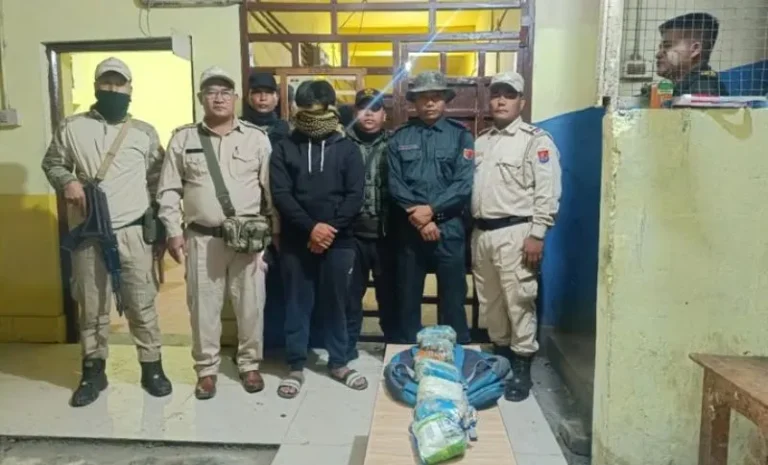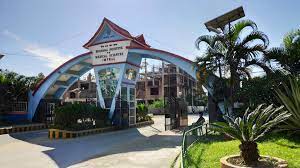“After a five-year pause, PM Modi is set to visit Imphal and Churachandpur in July—amid ongoing ethnic strife, new infrastructural projects and growing national scrutiny.”
Summary of the News Article
Prime Minister Narendra Modi is expected to visit Manipur in July 2025—his first trip there since January 2019. He is likely to visit Imphal and Churachandpur, inaugurate the newly built civil secretariat in Imphal West, review road repairs, and see the helipad under construction in Churachandpur. The visit follows the continuing ethnic violence that erupted in May 2023, which claimed over 260 lives and displaced around 60,000 people. The government is preparing project briefs, but no official date has been announced yet
PM Modi Returns to Manipur After Five Years: What His July Visit Could Mean
Introduction
It’s been a while—since January 2019, to be exact—since Prime Minister Narendra Modi set foot in Manipur. That long break ends this July, as sources reveal he’s planning to revisit Imphal and Churachandpur. But with the shadows of the violence that began in May 2023 still looming, this trip carries much more weight than ribbon-cutting ceremonies. Let’s explore what’s on the agenda, why it matters now, and how this visit could shape Manipur’s future.
1. Why Now? The Timing Explained
Modi’s last visit was pre-violence; now, it comes after more than two years of ethnic unrest between Meitei and Kuki-Zo communities that left hundreds dead and tens of thousands displaced With President’s Rule in place and ongoing demands for peace, his July appearance could be a message—from central leadership to local solidarity.
2. What’s on the Agenda: Buildings, Roads, Helipads
2.1 Civil Secretariat in Imphal West
The newly completed civil secretariat will likely be inaugurated—a sign of governmental presence and administrative focus
2.2 Churachandpur Helipad
A helipad in Churachandpur is in the works, crucial for remote connectivity and security logistics in the hills
2.3 Road Infrastructure
Reports suggest repairs and upgrades to highways connecting key districts—and given highway disruptions during violence, this is a timely move .
3. Why the Visit Matters Politically and Emotionally
3.1 Symbolism over Silence
Critics have slammed Modi for ignoring Manipur amid crisis, accusing him of prioritizing foreign tours over domestic empathyThis visit could be seen as a corrective gesture.
3.2 Boosting Peace Initiatives
His presence might lend momentum to ongoing dialogue between communities and bolster faith in state rebuilding.
3.3 Media and Attention
A high-profile presidential visit draws national media, focusing public discourse on Manipur’s needs—and keeping stakes high for genuine progress.
4. The Unfinished Backdrop: Ethnic Violence & Hurt Communities
May 3, 2023, marked a devastating split: Meitei vs Kuki-Zo clash led to 258 deaths, 60,000 displaced, and widespread damage Presidential Rule was imposed in February 2025, but concerns remain:
- Relief camps still have thousands waiting.
- Restrictions on highways inhibit supplies.
- The Governor travels by helicopter due to fear
Modi’s visit is happening against this backdrop.
5. The Road Infrastructure Angle
5.1 Roads Connect, Not Just Physically
Fixing roads isn’t just transit—it’s healing. It reconnects ghettos, reignites trade, and gives farmers, schools, and patients access.
5.2 Highway Disruptions During Violence
Cut highways sparked shortages and resentment. Restoring and repaving roads can signal renewed unity and access.
6. The Helipad Plan in Churachandpur
6.1 Strategic Relevance
Churachandpur was an epicenter during violence. A helipad strengthens mobility for relief, administration, and medical services.
6.2 Symbolic Outreach
By spotlighting the hills, the visit emphasizes that the state’s success isn’t limited to Imphal.
7. Civil Secretariat: A Central Vision in Action
7.1 Administrative Message
Opening the civil secretariat broadcasts that governance isn’t distant—but here to serve locally.
7.2 Operational Impact
Modern facilities promise better coordination, quicker approvals, and clearer effort to decentralize power.
8. Political Echoes: Opposition Voices and Public Expectations
Opposition parties, including Congress and NESO, have been vocal—calling the lack of a visit “pathetic” and urging the PM to bring empathy to the state’s crisis zones The visit itself is being scrutinized for substance—not just optics.
Will Modi visit affected relief camps, meet displaced families, and consult frontline commanders? Those steps will define whether it’s perceived as genuine outreach or photo-op.
9. What Might Follow After July
- Project kick-offs: New infrastructure schemes, peace-building funds, and livelihood initiatives could be announced.
- Security boosts: Perhaps more CAPF deployment or district-level task forces.
- Monitoring visits: If he meets affected families or displacement sites, that sets follow-through expectations.
Conversational Connections
Ever paused on crumbling roads and felt the gap between towns? Imagine those gaps as emotional too. A damaged road means community estrangement. And a helipad isn’t just fancy concrete—it whispers, “we care about your hills.” It’s like finally repairing the frame before painting the picture.
PM Modi’s July trip can either be a landmark in rebuilding Manipur—or be written off as a missed opportunity. What matters is what he says, who he meets, and what follows. In a state longing for trust, it might be the bridge the state needs—or a bridge too far.
FAQs
1. When was PM Modi’s last visit to Manipur?
He last visited on January 4, 2019—over five years ago
2. Why is the July 2025 visit significant?
It marks his first return since the May 2023 violence that claimed over 260 lives and displaced tens of thousands .
3. What key projects is he likely to inaugurate?
The new civil secretariat in Imphal West, a helipad in Churachandpur, and major road repairs are expected highlights
4. What criticisms have been raised about this visit?
Opposition leaders have accused Modi of lacking empathy and ignoring Manipur compared to frequent foreign tours
5. How could this visit impact peace and development?
It could boost morale, improve connectivity, validate administrative intent, or risk criticism if perceived as superficial without genuine engagement.



